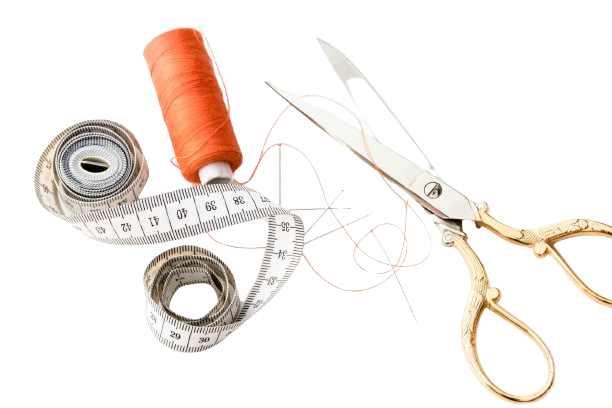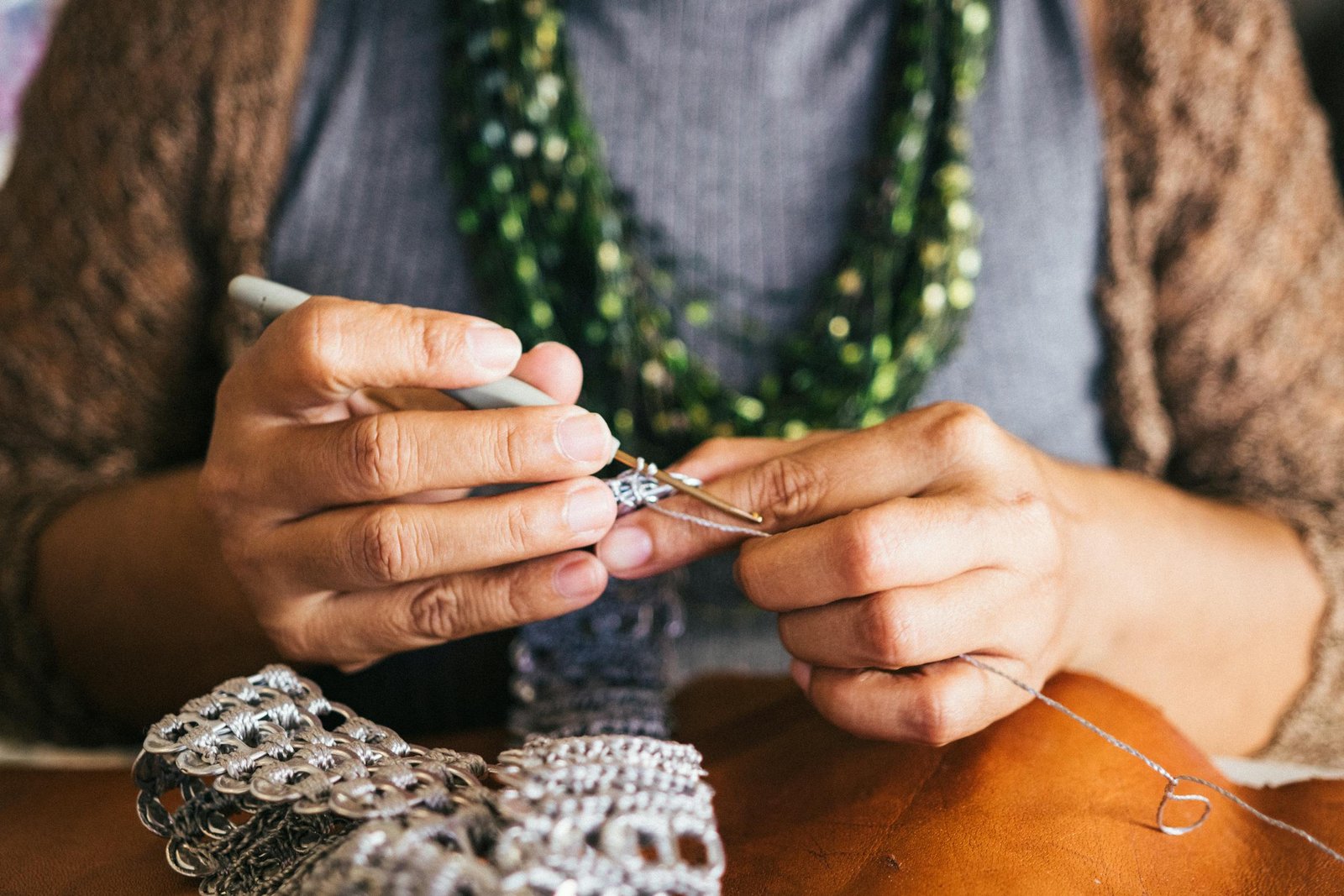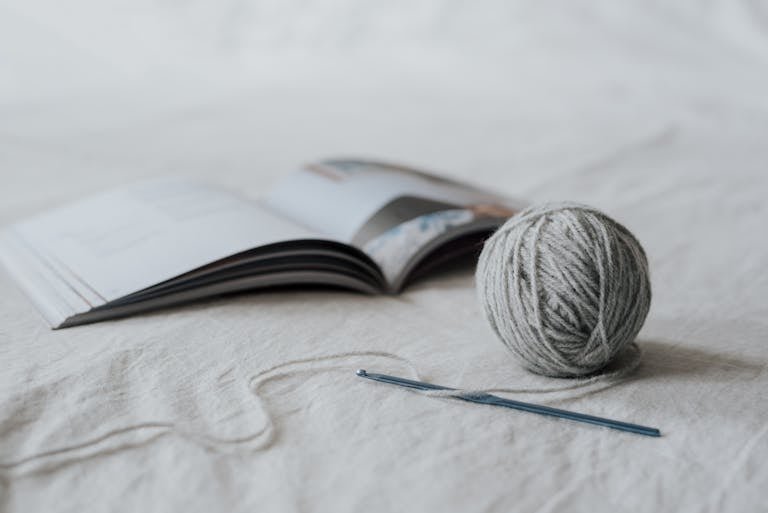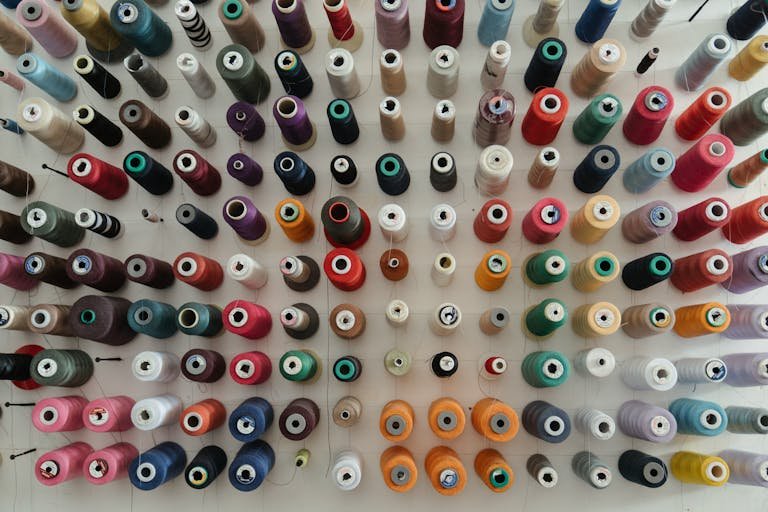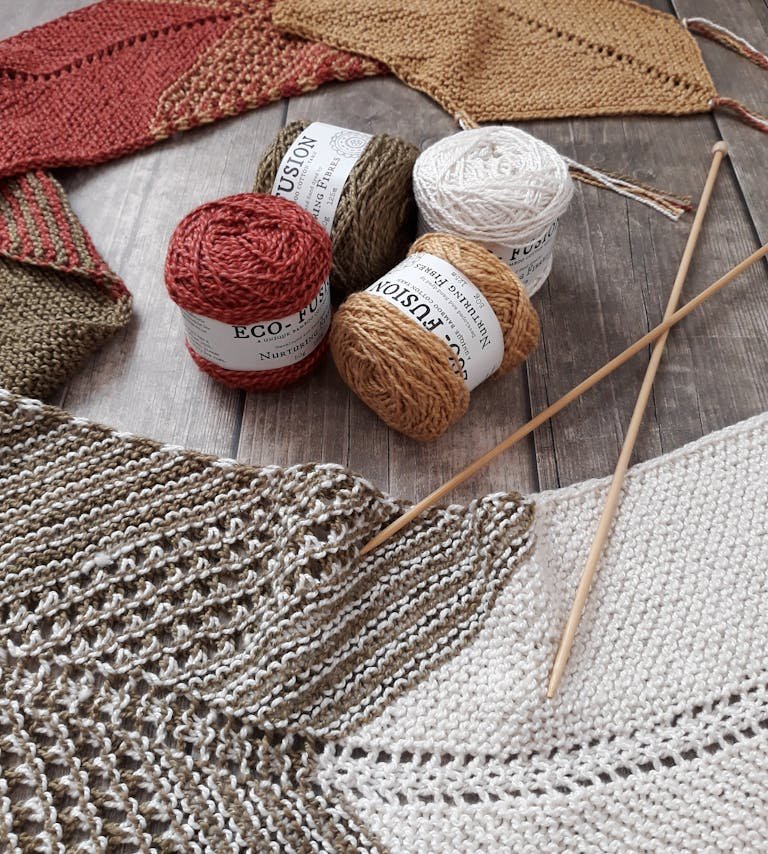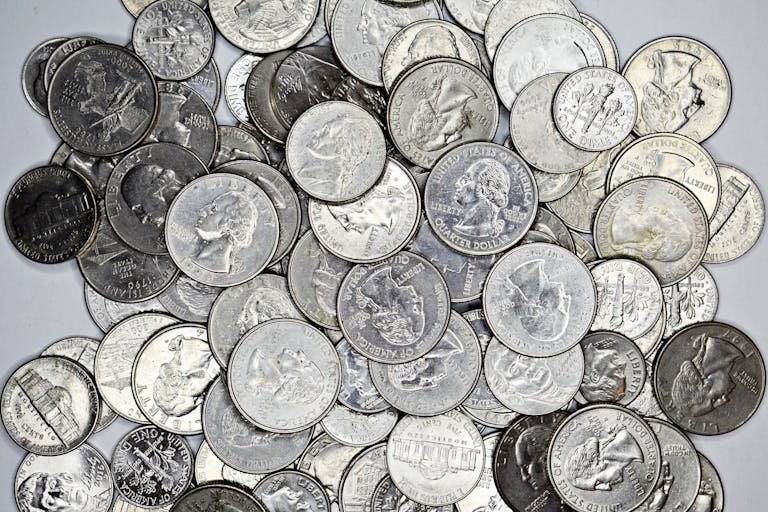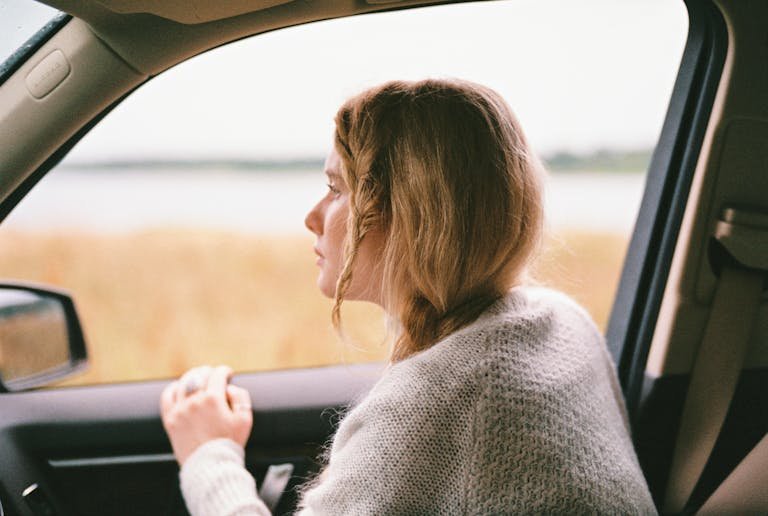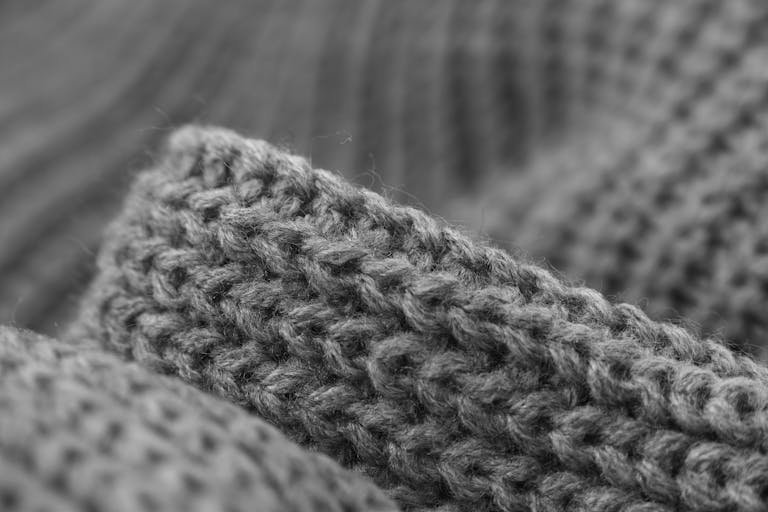Crochet vs Knit: Which is Right for You?
The Difference Between Crochet and Knitting should be appropriately comprehended if you want to select the right craft which meets your interests and project objectives. Whether you’re starting a new hobby or expanding your skills, exploring the unique aspects of crochet and knitting is likely to improve your journey in crafting. The two textile arts may seem alike at sight, but, at closer look, each of them has its own features, techniques, and history. Let’s dive! In this article, we will compare What is the Difference Between Crochet and Knitting?
What is Crochet?
Crochet is a type of fabric construction involving the use of a hooked needle which comes in various shapes and sizes and works by latching loops of yarn to form a given pattern.
Crochet means one stitch at a time. The yarn is initially wrapped around the hook until it goes through the loops on that hook to create the stitches. The crocheted things can be of anything from straightforward scarves and blankets to complicated lace doilies and clothes if you will.
What is Knitting?
Knitting is another popular method of crafting textiles that uses which uses straight pins on which to weave loops of thread. This refinement is well-respected for its capability to produce stretchable and elastic fabrics with a distinctive pattern.
Knitting involves holding multiple stitches on the needles at once and transferring them back and forth to create rows of fabric. A mistake doing this increases the possibility of the whole work undoing when a stitch gets dropped, which then complicates the correction process. Even though wasting yarn is a drawback of knitting, the fabric is very stretchy and comfortable, which makes it good for clothes like sweaters, socks, and caps among others.
Difference B/W crochet and knitting
Key differences between crochet and knitting:
| Feature | Crochet | Knitting |
|---|---|---|
| Tools | Single hooked needle | Two long needles |
| Stitches | Knot-based | Interlocking loops |
| Technique | One stitch at a time | Multiple stitches on needles |
| Fabric | Denser, less stretchy | Smoother, more drapeable |
| Speed | Can be faster for beginners | Faster once proficient |
| Ease of Learning | Generally easier | May have steeper learning curve |
| Row Formation | Right and wrong side | Reversible rows |
| Shaping and Seams | Can be shaped within rows, seams crocheted directly | Shaped by increasing/decreasing stitches, sewn seams |
| Colorwork | More focused on single-row color changes | Established techniques for large color areas |
| Level of Detail | More visible stitch definition | Very smooth, even fabric |
| Maintenance | More durable, snag-resistant | Can snag more easily |
| Community and Resources | Growing, vibrant community | Vast, established community |
Tools
Knitting Tools
The art of knitting comes along with two big needles, where each is held in either hand. These needles have various sizes and made from different materials like bamboo, aluminum, and plastic. Every one of them has a different feel and grip hence different from each other. Needle size changes the tension and size of the stitches and hence, the fabric. Thus, it is the size of the needles that determine the final texture and the fall of the fabric.
Crochet Tools
In crochet, the use of a single hooked needle, in your dominant hand, guarantees its success. Hooks of various sizes and materials is also available in the stores. The hook size is essential as it decides how tight the stitches will be and the exact number of stitches. Unlike on the knitting needles which are normally scary to beginners simply because they are required to take care of two at once, the one crochet hook is normally considered easy for beginners to handle.
Stitches
Knitting Stitches
In knitting, stitches form interlocking loops – an original knitting fabric that can be stretched. Stitches of knitting include but are not limited to the basic knitting stitch and purl stitch. These two stitches can be played out in different modes resulting in different pattern and textures as there are stockinette, garter, and ribbing. From the smooth and supple feel of knitted fabric to the elasticity of garments like sweaters, socks and hats, knitting is a better choice of fabric compared to woven fabric.
Crochet Stitches
The weave of crochet which is formed by knots gives the fabric a lace-like look with less stretching ability. The most basic stitches are the `single crochet`. However, there are additional ones such as half double crochet, double crochet, and treble crochet. As they can be getting stitched together in so many ways, they can create complex patterns and textures. Crochet fabric typically turns out to be thicker and more substantial which is great for the blankets piece, amigurumi (stuffed toys).
Technique
Knitting Technique
Knitting involves manipulating loops back and forth between two needles. You work on multiple stitches at a time, which are held on the needles. It is very similar to knitting, since you have the stitches which are pinned on the needles. Such complexity that knitting becomes because knitting involves both needles and keeping track of all the stitches at the same time. A mistake in knitting is when you drop a stitch and it will become unraveled, this comes from having to re-do the part of your work you wanted to be perfect.
Crochet Technique
Crochet differs from other needlecrafts in that it directly works on the work piece one stitch at a time. It also may be associated with the lower degree of complication that can be perceived, especially among newcomers. For that reason, if you mess up, stitch unravelling is always as simple as making a correction and putting the right stitch again. The activity of crochet is rather forgiving that is why it is considered as a nice choice by beginners.
Fabric
Knitting Fabric Characteristics
Knitting creates a smoother, more drapeable fabric that is ideal for garments. The elasticity of knitted fabric makes it perfect for items that need to stretch, like socks and fitted sweaters. The smooth surface of knitting also allows for intricate patterns and colorwork, such as Fair Isle or intarsia.
Crochet Fabric Characteristics
Crochet produces a denser fabric with more structure. This makes it excellent for projects that need to hold their shape, such as bags, baskets, and amigurumi. While crochet can be used to make garments, they tend to be less elastic and drapey than knitted ones. However, the unique textures and patterns achievable with crochet can create stunning results for all types of projects.
Speed
Knitting Speed
Once you get the hang of it, knitting may seem to be surprisingly fast, even in large areas. Proficient knitters keep going with rows with amazing speed due to learning continental, or English styles of knitting that put in order yarn movement and needles slipping.
Crochet Speed
First timers, crochet is often easier to master and get works finished faster as it only involves working one stitch at a time compared to knitting. Some of them even argue that they can turn small self-made hats and scarves and amigurumi objects faster than just knitting.
Ease of Learning
Learning to Knit
The thing that knitting is tricky in is that it uses two needles which have to be coordinated and simultaneously involves following multiple stitches. Nevertheless, it is later crowned with a rhythm and an unavoidable pleasure. It is good to know that there are many resources like web tutorials, classes and knitting groups among many others that can be tapped by new knitters to help them grasp the basics and become better at it.
Learning to Crochet
Hooking is generally thought to be a more straightforward technique for newcomers to master. The fact that there is only one crochet hook and a stitch-by-stitch work structure makes it so much easier. For many beginners, the enjoyment of crochet arises from the fact that the most mistakes can be corrected and the technique is very simple. Same as knitting, with plenty of instructions, new crocheters can also learn easily.
Other Considerations
Yarn Choices
Both knitting and crocheting can utilize the multiplicity of the species of the yarn, from the natural fibers like wool, cotton and synthetic options like acrylic and nylon. The type of yarn will be dependent on project behavior and the cloth attributes that need to be achieved. Likewise, a floral, drapey yarn could be exactly what you’re looking for to craft your knitted shawl, whereas a stiffer texture might work better for your crocheted basket.
Fixing Mistakes
Perhaps, the most substantial point of separation between knitting and crochet is how mistakes are corrected. With crochet, it’s also much easier to correct mistakes because you will unravel only the stitch that you have done wrong and just redo it. Dealing with mistakes, in knitting, is a little more troublesome, and it is stain specific. Once a stitch is dropped in knitting it may then unravel whole rows and such problems need to be addressed with extreme care to repair.
Read Also: How to Sew on a Patch?
Final Words
If between crochet or knitting you cannot choose, your personal taste and the project you want to create will define you. Both of these modalities come with an individualized range of gestures, techniques, and properties of the fabric which can be adjusted to different requirements. Be it the perfectly stitched, playful knitted fabric or the complex and fashionable crochet stitches, these forms of crafts offer unbounded fields for creativity and joy.
